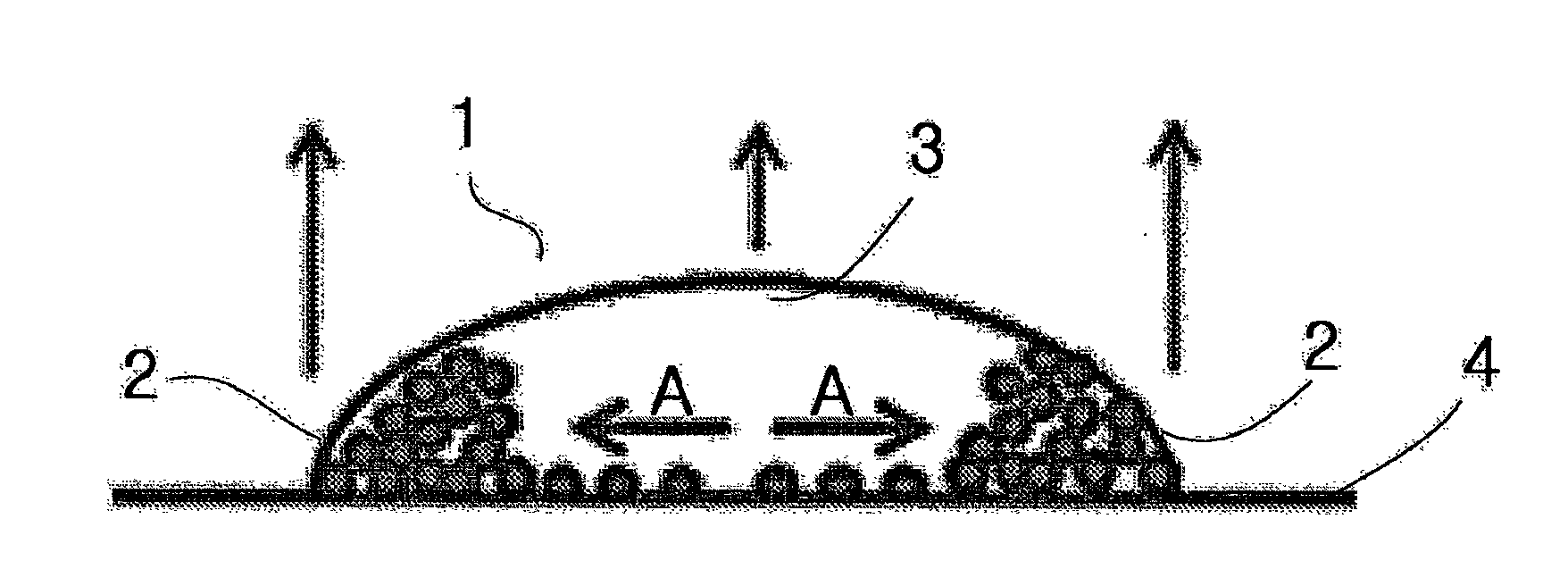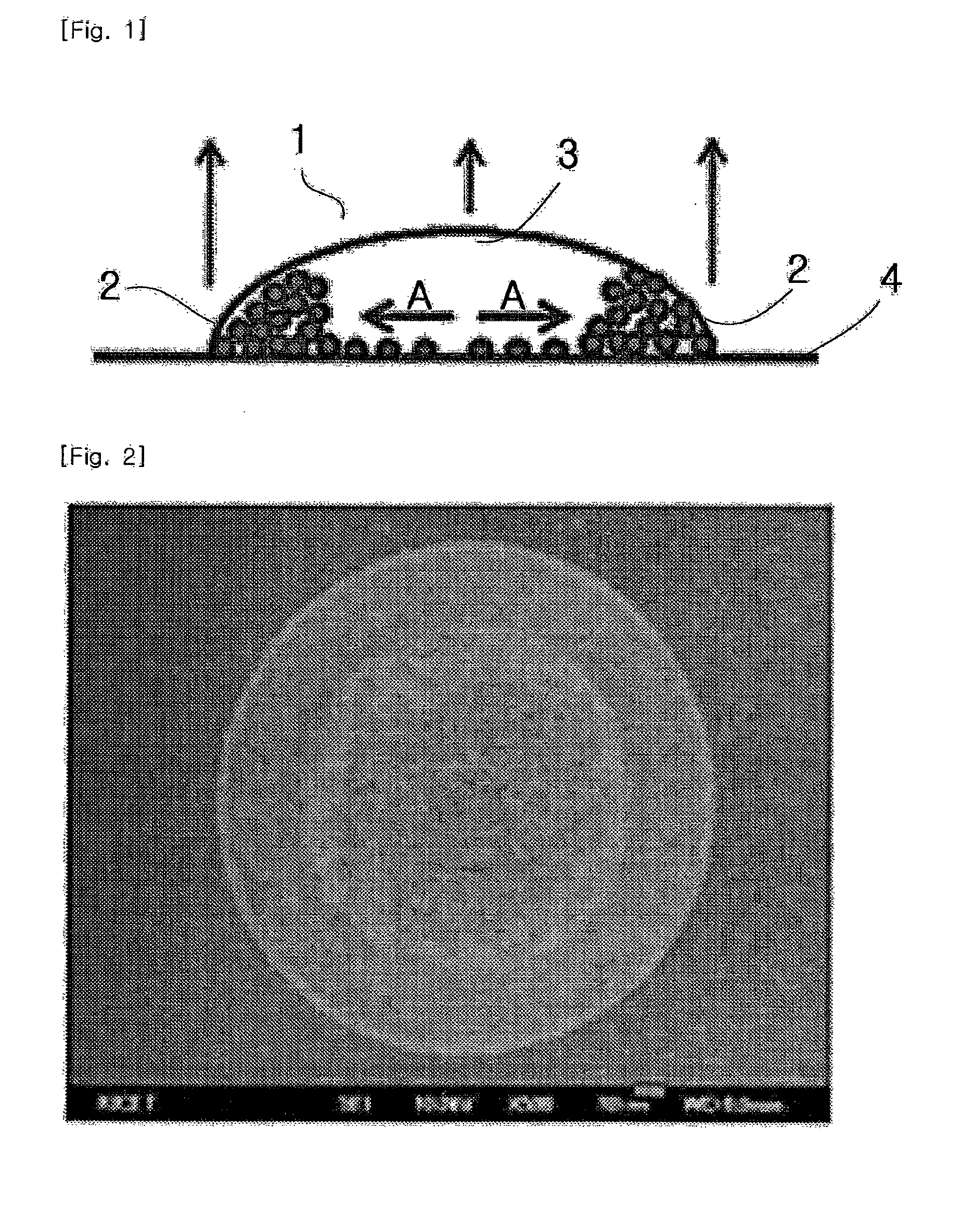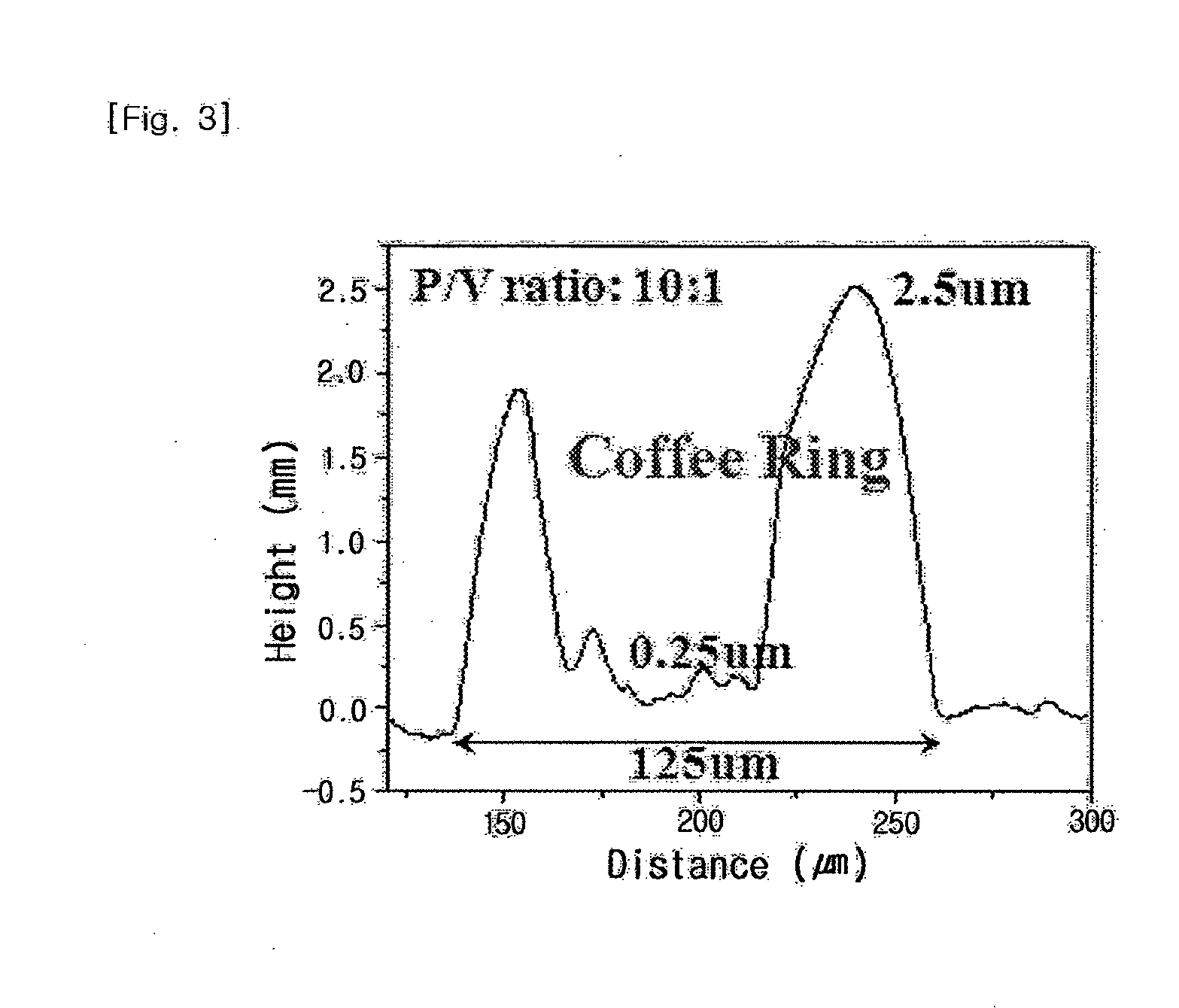Ceramic ink for manufacturing ceramic thick film by inkjet printing
a technology of ceramic thick film and inkjet printing, which is applied in the direction of inks, thin/thick film capacitors, fixed capacitors, etc., can solve the problems of uneven filling of ceramic powder in the film, too high to be joined to heterogeneous materials, and difficult to realize a fine circuit of the very large scale integrated system module, etc., to achieve dense and uniform filling, improve ceramic properties, and high and uniform refill rate
- Summary
- Abstract
- Description
- Claims
- Application Information
AI Technical Summary
Problems solved by technology
Method used
Image
Examples
example 2
Preparation and Analysis of Ceramic Ink Comprising Ceramic Powder Dispersed in Mixture Solvent
[0063]In this example, a ceramic ink was prepared by dispersing alumina (Al2O3) and barium titanate (BaTiO3) ceramic powders in Mixture Solvent 1 (75 vol % of ethylene glycol monomethyl ether+25 vol % of dipropylene glycol monomethyl ether) and in Mixture Solvent 2 (75 vol % of N,N-dimethylformamide+25 vol % of formamide), respectively, and was then ejected by inkjet printing to form a ceramic thick film having a dot pattern and a line pattern ceramic thick film. Then, fine structure and surface roughness of these thick films were observed.
[0064]FIGS. 23 to 26 show dot and line pattern alumina ceramic films formed using Mixture Solvent 1, and FIGS. 27 to 30 show dot and line pattern barium titanate ceramic films formed Mixture Solvent 1. Specifically, FIGS. 23 and 27 are electron micrographs of the dot patterns, FIGS. 24 and 28 are graphs of surface roughness of the dot patterns, FIGS. 25 a...
PUM
| Property | Measurement | Unit |
|---|---|---|
| interior angle | aaaaa | aaaaa |
| size distribution | aaaaa | aaaaa |
| temperature | aaaaa | aaaaa |
Abstract
Description
Claims
Application Information
 Login to View More
Login to View More - R&D
- Intellectual Property
- Life Sciences
- Materials
- Tech Scout
- Unparalleled Data Quality
- Higher Quality Content
- 60% Fewer Hallucinations
Browse by: Latest US Patents, China's latest patents, Technical Efficacy Thesaurus, Application Domain, Technology Topic, Popular Technical Reports.
© 2025 PatSnap. All rights reserved.Legal|Privacy policy|Modern Slavery Act Transparency Statement|Sitemap|About US| Contact US: help@patsnap.com



